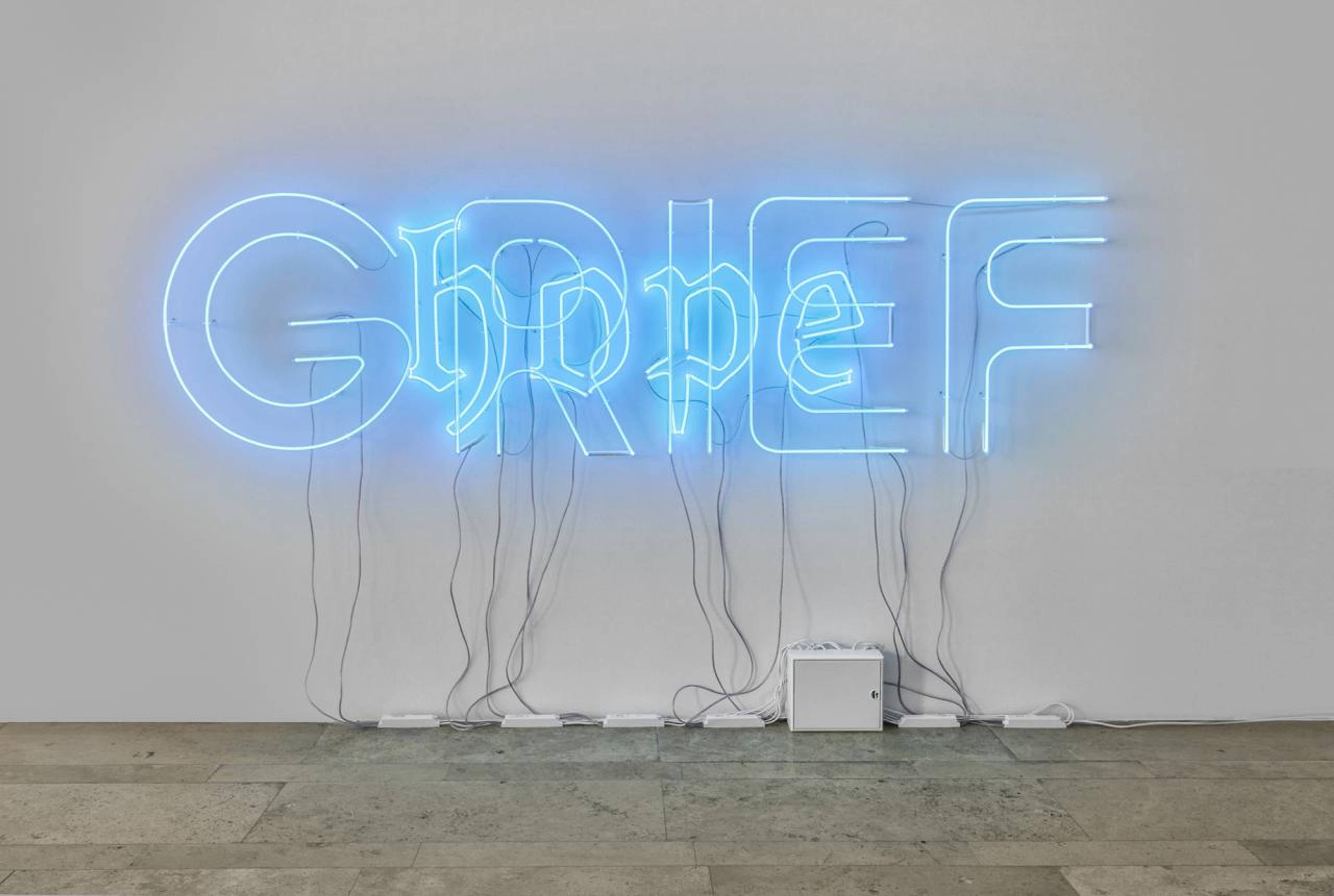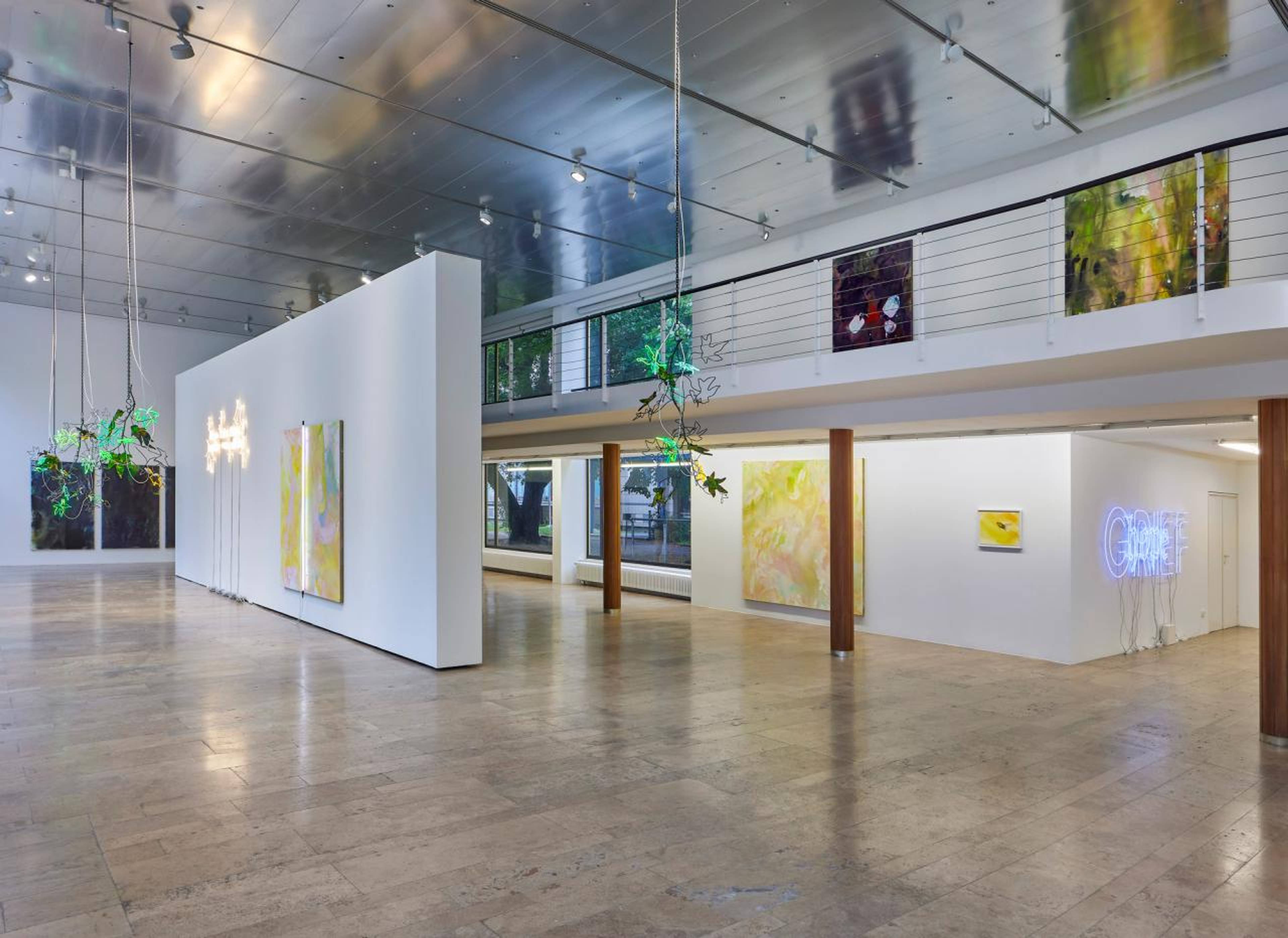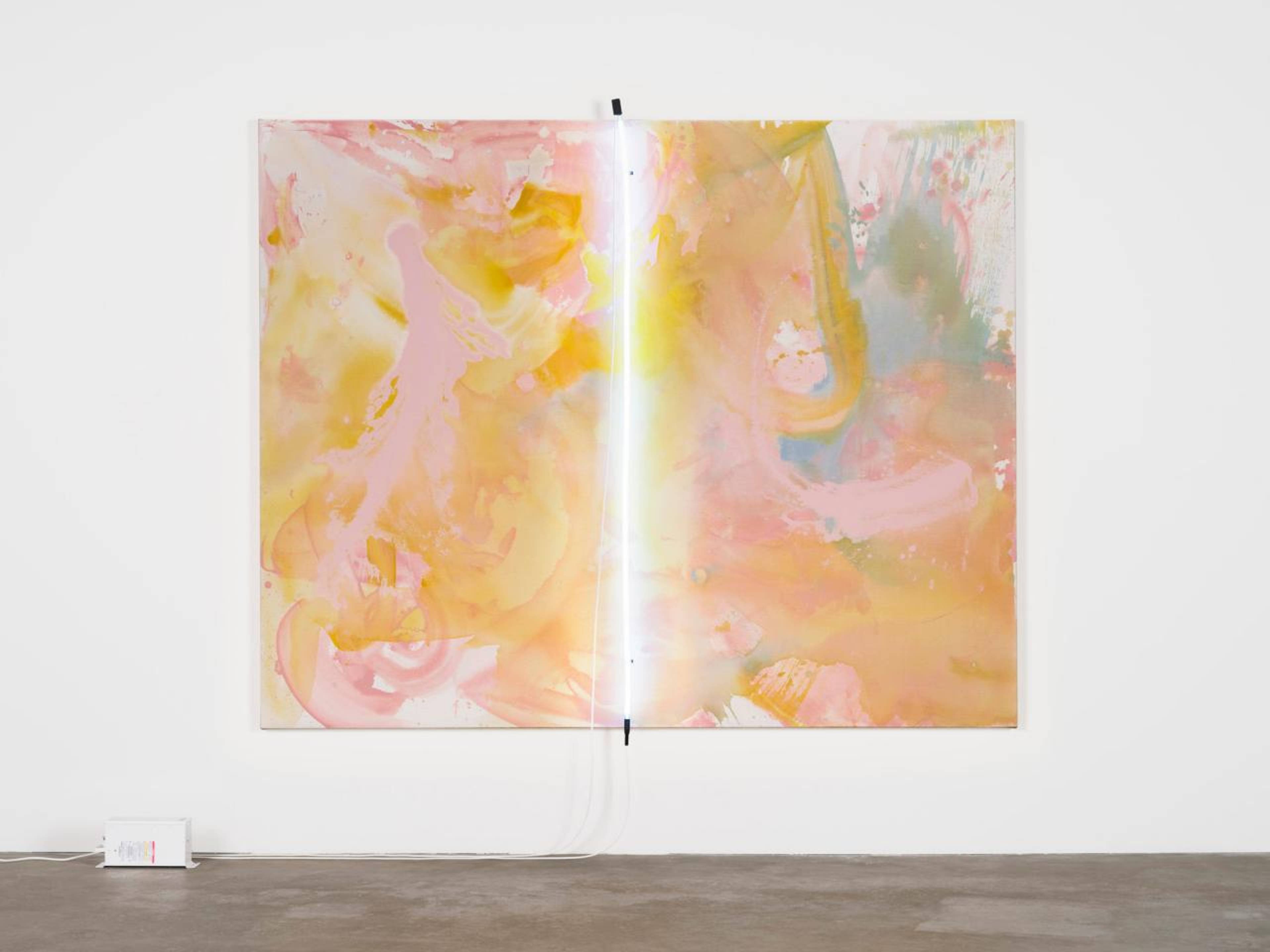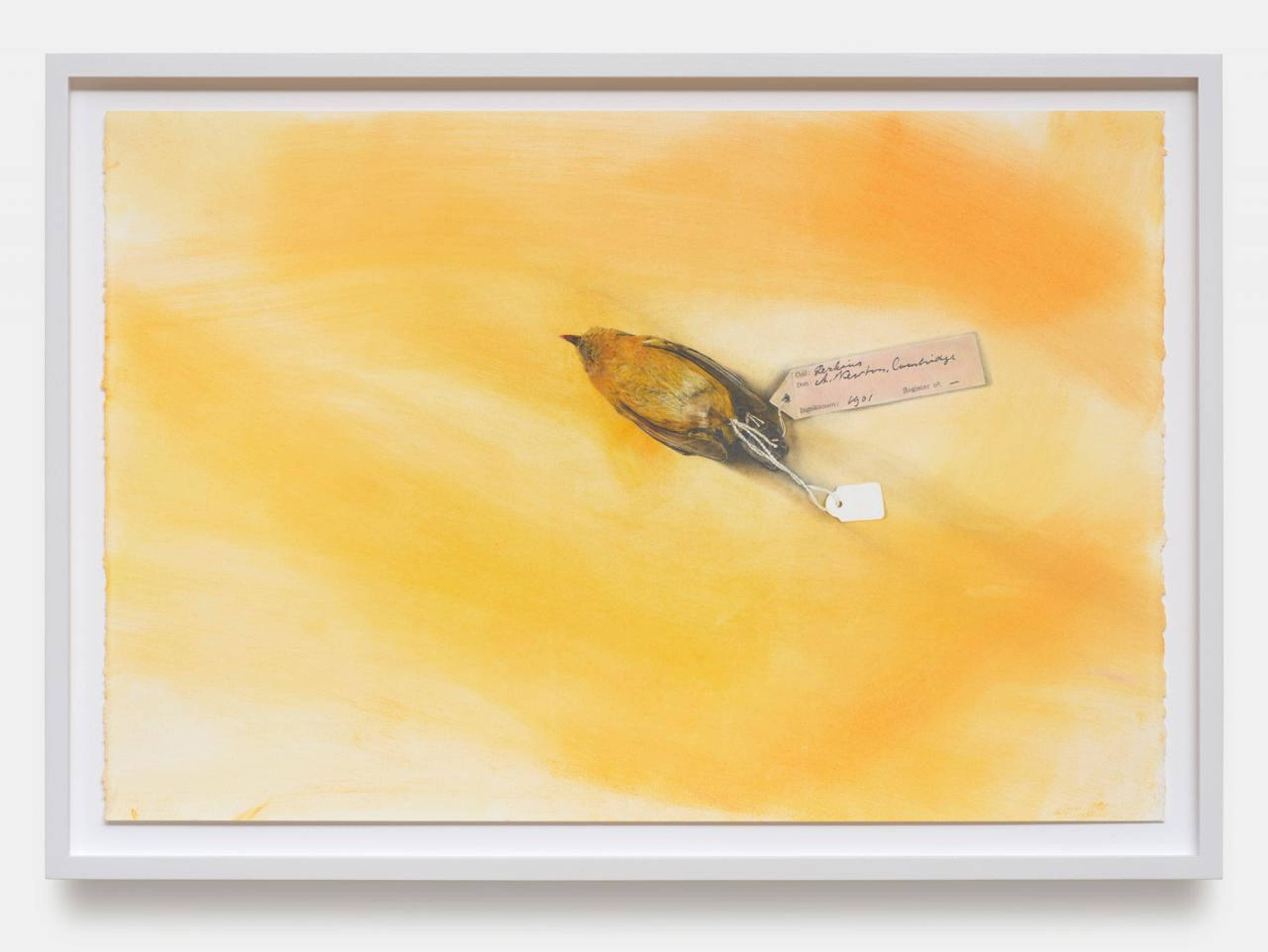The political side of beauty is urgent, especially in its capacity to mediate bad news. Andrea Bowers and Mary Weatherford are two artists whose works often inquire into beautiful yet clandestine storytelling, in registers both personal and collective. Their dual exhibition “Drink the Wild Air” at Capitain Petzel, Berlin, investigates ways of gathering, disseminating, and deciphering the hard facts and histories of eco-survival, joining Bowers’s thirty-year practice of chronicling protest and activist movements – in drawings, painting, sculpture, and film – to Weatherford’s revisionist approach to Color Field painting. Both artists are presenting recent bodies of work grounded in aesthetic concerns but very much situated in the world outside the studio.
A sudden summer rain caught me on my way to the gallery. Entering the space with wet shoes, drenched jeans, and foggy glasses, I am greeted by Bowers’s Chandeliers of Interconnectedness (2023), a group of long-chained sculptures that, made from steel, fused glass, and details of dim green neon, emulate the bushy branches of sycamore trees. Hidden inside their foliage, sentences trickle down: LIGHT AND SOIL ARE IN US and OUR BODIES FLOAT AMONG STARS, among others, are quotes from Susan Griffin, author of Woman and Nature (1978), a seminal feminist text linking patriarchal violence to ecological devastation. Hard to catch at first, perhaps even rashly stuffed inside, these phrases need a second reading to come out of the leaves and become resonant, while their neon flickering fills the space with faint chirping like strange bird song. Two graphite and pastel drawings of a bird with a tag hanging from its wing, both titled The Dead Silence of Extinction (2023), are careful and patient, yet immediate in their import. More ambiguously, at one end of the catwalk-like first floor, the flower meadow and gowned maiden of Femme Trans-Corporeal Fantasy (Leaping Fae) (2023) are painted in acrylic on pieces of cardboard that, apparently glued together, barely and fragilely hold onto each other.
View of “Drink the Wild Air,” Capitain Petzel, Berlin, 2023. Courtesy: Andrea Bowers and Mary Weatherford and Capitain Petzel, Berlin. Photo: Gunter Lepkowski
Mary Weatherford, Venice Dawn White Light, 2023, Flashe and neon on linen, 218.5 x 261.5 cm. Courtesy: the artist and Capitain Petzel, Berlin
Four large-scale canvases by Weatherford, all titled Forest Gate (2023), are mounted low at one end of the gallery, painted predominantly in broad strokes of deep green Flashe. Tenebrous and solemn, sponged blotches of color cover the surfaces unevenly; unfinished linen bleeds through their less dense stretches. Nearby, a thin, pink, slightly bent rod of neon light – a hallmark of her work since its first incorporation in 2012 – slashes the compact, heavily worked green canvas of Forest, Ruby Light (2023) in half, buzzing mannishly. Upstairs, level with the dripping tree canopy of the boulevard outside, a watery scene spills over the sprawling surface of Half Way To Hanakapi’ai (2021), resembling an ebb tide as it recedes back into the sea, leaving flotsamous scraps of aquatic life behind on the shore. The Flashe here is diluted and spread thin, evincing the copious manual labor of working and reworking its surface.
Whether drenched in Flashe or signed in neon, what’s at stake here is documentation: writing down the forms, textures, and colors of climate loss through the capacious scope of art
The early 20th-century paintings of Charles Burchfield, who lived near but seldom depicted Niagara Falls, dealt copiously with landscape temperature and mysticism, embowing symbols and hidden meanings in images of the local environment. The narrative logic at play in “Drink the Wild Air,” whose title derives from a poem by the transcendentalist Ralph Waldo Emerson, “Merlin’s Song” (1867), is similar: Whether drenched in Flashe or signed in neon, what’s at stake here is documentation: writing down the forms, textures, and colors of climate loss, both as a shared responsibility and as a personal testimony, through the capacious scope of art. The metrics of truth, the means of knowing and declaring, are held at bay and seem to unveil their operative logic. A wash of grief and a glimmer of hope in the face of slow collapse are experiences that both artists allow into the show space. Their works read as meticulous syllables of a poetry politically charged: an attempt to picture the precarity of nature and the resilience of beauty as it enters the systems and mechanisms of art and its institutions.
View of “Drink the Wild Air,” Capitain Petzel, Berlin, 2023. Courtesy: Andrea Bowers and Mary Weatherford and Capitain Petzel, Berlin. Photo: Gunter Lepkowski
Andrea Bowers, The Dead Silence of Extinction (Maui Akepa, last confirmed sighting 1988, HI, scientific specimen preserved at Naturalis Biodiversity Center), 2023, graphite and soft pastel on paper, 38. x 57 cm unframed. Courtesy: the artist and Capitain Petzel, Berlin
___
“Drink the Wild Air”
Capitain Petzel, Berlin
23 Jun – 19 Aug 2023






